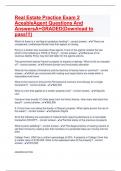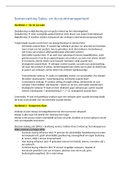Exam (elaborations)
HSY2601 Assignment 2 Semester 2 2024 | Due 26 August 2024
- Institution
- University Of South Africa (Unisa)
- Book
- Post-Western World
HSY2601 Assignment 2 Semester 2 2024 | Due 26 August 2024. Multiple Essays Provided. Discuss some historical grounds for the rise of racist beliefs in the 19th century. - Provide contextual examples from the study guide and suggested readings. Length 500 words max
[Show more]





